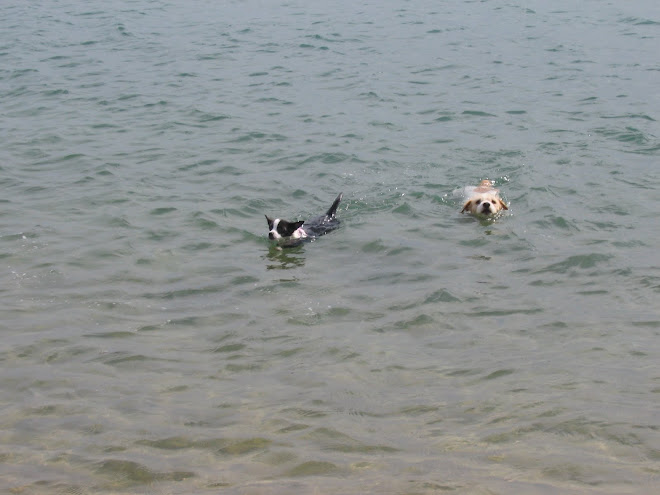Welcome Chloe and Eddie to the pack - No not new dogs into my pack but a new Pack Leader Chloe and her Jack Russell Eddie!
So Eddie is mis-behaving at school - this may remind some of you of Peter's School Days, so I know I can help you here as Peter did graduate class! So this is not an unusual problem - you are not alone so I am posting some feedback on this subject.
Training school is not a natural environment for dogs...a necessity for a well-trained dog but my point is that their behaviour there can vary greatly from other "normal" responses. In such a school they are usually on a lead and that limits the choices a dog has to act, normally a dog has 4 choices of flight/fight avoid/submit. When in a training environment the choices are limited, thus some choose fight and put up an aggressive display, these are insecure dogs as such they act aggressively dominant over other dogs or they are insecure afraid acting aggressively to keep other dogs away from them!
When they are on a lead as well as decreasing their choices it acts as a tool to transfer our energy - if that is negative energy such as fear of how they may behave or human anxiety then a dog sees this a week energy and takes over as Pack Leader making their choice fight rather than submit! This is when the association takes place - the dog learns that at training school on a lead + other dogs = aggression, so each time they go this learned behaviour is reinforced, so they keep on acting out! But to avoid school is to give-in to the dog - we don't do that as Pack Leaders!
So to change the response change the context - the training school is the environment and does not need to be changed, the lead needs to be on so this cannot change either - What CAN change is the human's energy and the dog's response. Picture how you want the experience to be - keep focused on this while you hold the lead. Keep the lead as loose as you can. Now teach a new response, in this case "submit", every time the dog acts out be confident and firm while calm - correct the display with a vocal "pshhht" which says to a dog "hey I disagree with what you are doing" (or whatever noise you are comfortable making but it should not be a command as such) and if need be follow-through with a pop of the lead - this is a quick tighten and release action. This interrupts the behaviour and gets you access to the dogs mind - then be sure to redirect the dog what you do want e.g. submit is to be in a relaxed physical position. Any interruption needs to be timed so that it stops the behaviour before the dog escalates to a high level response - watch the body language and react BUT at the same time avoid anticipating the dog as else you run the risk of the self-fulfilling prophecy!
Practice Makes Permanent - the new calm behaviour when carried out regularly in the context of the training school in time substitutes the old - so that training school with the lead on + other dogs = calm, the old behaviour gradually becomes extinct. The point here is that dogs cannot have conflicting emotions so cannot be aggressive and relaxed at the same time, so they move on and behave differently.
Tellington Touch is a good way to calm an anxious dog BUT it has a major drawback potentially - in this situation you would be applying touch which would initially reinforce the unwanted behaviour, so I do not recommend it unless a dog is in a calm submissive state first then it is applied to increase relaxation, unlikely in such a situation you describe.
The reason that in other situations with the same dogs your dog may behave well is because the lead is removed and the environment is different - a complete change in context so a completely different response! When a dog is on-lead and near other dogs they cannot use avoid or flight, they can only choose fight or submit - we have to be their Pack Leader and teach them to submit, or we can change the situation by choosing avoid giving the other dog space or flight by turning to walk the other way but these we only choose when a dog is calm submissive - WE always own the choice and make that choice for the dog they then follow our lead! As responsible humans we NEVER choose fight!!!!
IF you try this and it isn't working then you need to look again at the context - what else is going on? Is this really aggression as in a dog's "fight" choice or is it in fact "over-excitement" which is different requiring another approach? How do you enter/leave the school - if it is when the dogs is acting-out and not calm submissive then you are setting the scene. As you see there are so many variables here but I hope I've given you some ideas to start with, please feel comfortable with asking more, I had exactly this problem with my rehab dog Peter!
This is dog psychology....not training but it should help you to handle any such displays in future! I am able to help more just let me know as this would need a more one-to-one approach than here, anyone can contact me directly through my email address see my profile on the here on dog-blog!
Subscribe to:
Post Comments (Atom)





No comments:
Post a Comment